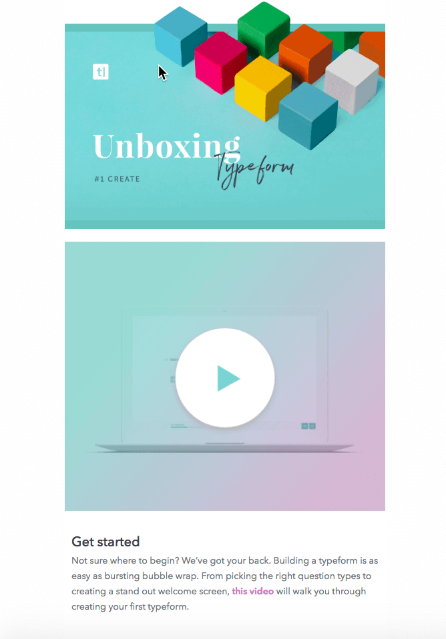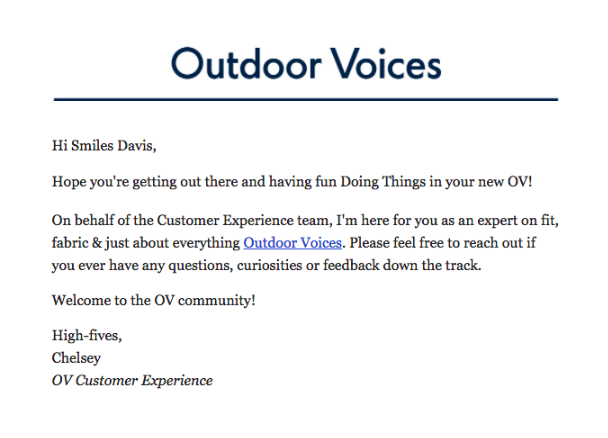How to turn one-time shoppers into lifelong customers
Do you treat all your customers the same? Do you lump them into one big group regardless of how many times they’ve purchased from you and how much money they spent on your site?
That’s no way to turn one-time shoppers into lifelong customers.
Here’s the thing: if you go to so much effort and invest time, money and resources into attracting new visitors to your shop and getting them to buy, wouldn’t you want to keep these new customers happy and coming back for more?
We bet you would. So in this post we’ll share some useful tips and advice on how to turn those one-time shoppers into happy, lifelong customers.
Customer onboarding
“Customer onboarding” refers to welcoming new customers and sharing useful content with them that’s designed to help them have the best, most successful experience using your product.
So the first step to turn one-time shoppers into lifelong customers is to make sure they are happy with their purchase. For that to happen, you need to make sure they know how to use it and how to make the most of it to the point they feel their money was well spent.
How can you do that?
The easiest, most effective and affordable way is by using email marketing.
You should have automated emails ready to go the moment a customer makes a purchase. With these emails, you’ll welcome them to your brand family and thank them for their order.
You can also include a customer success story or a video that helps to reinforce the new customer’s purchase decision, or that inspires them and keeps them excited and anticipating the arrival of their new purchase.
Once they receive their order, you should have another email ready to go to ensure they’re happy with their purchase. A simple email where you ask “Is everything ok with your order?” will do.
If you’re selling complex software or products, you should also send tips and tutorials on how to use the product and make the most of it.
Check out this example from Typeform:

If you’re not familiar with automated emails, they’re fairly simple to create and send. You choose a trigger event and then decide what happens next.
For example, when someone makes a purchase, you can automatically send them a “Thank you for your order” email. Or when someone adds a product to their online cart but doesn’t complete the purchase, you can send an automatically generated email reminding them that they left without finalising their order.
These are just two examples but there are lots more types of emails you can automate depending on your needs.
Be helpful to new customers beyond the purchase
You want to keep the conversation going with customers after they leave your online shop. Post-purchase communication is a vital step that keeps you and your customers connected. So, this is one step that you don’t want to skip if you want to re-engage one-time shoppers and drive additional sales.
How can you do that? Again, email is a fantastic tool to provide useful content beyond the purchase and to increase engagement, revenue and long-term loyalty.
But for it to be effective, you need to send out useful and hyper-relevant content that’s targeted at each specific group of customers, depending on where they are in the purchasing journey.
In other words, you need to create personas and audiences based on demographic data and prior purchasing behaviour and then segment your mailing list so that you can serve up relevant messaging to entice repeat business.
Don’t know how to go about building buyer personas? Read our guide on why buyer personas are important and how to create yours.
Once you create your buyer personas and segment your mailing lists, you’ll be able to send content that’s highly relevant to the interests of each group.
And what happens when your one-time customers receive personalised content that they’re interested in? They’ll feel special, more connected to your brand and more likely to come back to your store.
Our 123 Reg email marketing tool has some neat features to help you isolate different groups of subscribers and make sure you’re sending them the right kind of content.
So what kind of emails and content should you send out to one-time shoppers to keep them engaged?
Here are some ideas you can try:
- Educational and entertaining content: If you have a blog where you publish great content, share some of those posts in your emails. Or share tips and advice directly into your email. For example, if you sell cooking utensils, don’t make all your emails about cooking utensils. Teach them how to make a cheesecake or a special dish that may or may not require the utensils you’re selling.
- Customer success stories: Share or tell the stories of your customers who have been using your products to help your new customers better relate to your brand.
- Content curation: You don’t need to create original content all the time to keep customers engaged with your brand through email. While you can share your own content, you can also mix it up and share useful, fun, relevant resources from around the web that you think your customers will enjoy.
- Brand culture: Let customers know how passionate you are about your brand and how interesting the people behind it are. For example, you could share behind-the-scenes videos from a teambuilding event or from when you celebrate one, two, five, ten years of being in the business. Showing off your brand culture and allowing one-time customers to get to know you can help them to begin to identify with your brand, too.
Exceed their expectations
Many businesses treat one-time shoppers like one-time shoppers. “Thanks for your purchase” and that’s about it.
But if you want to turn those one-time shoppers into lifelong customers, you need to be different. You need to stand out. You need to be memorable.
How can you do that? With amazing customer service that you deliver everywhere, in every channel.
This can mean anything from sending out a lovely “thank you for your order” handwritten note or offering a discount or a coupon a few weeks after their first purchase to providing friendly, lightning fast support on every channel – whether it’s email, live chat on your website or on social networks like Facebook and Twitter.
Here’s a nice example from Outdoor Voices:

Bottom line: smart and memorable marketing must apply to every channel – onsite and beyond.
Involve shoppers in your marketing efforts
Encourage new customers to share photos and videos on their social networks to show how they’re using your products in their day-to-day lives. Ask them to mention your brand or hashtag, or to create a hashtag of their own.
Invite them to write up reviews and testimonials on your website, on social networks or platforms like TrustPilot your Google My Business page.
Then re-share this content with your other fans and followers.
This type of “earned content” is very effective at encouraging repeat purchase behaviour. Not only that but customers will also feel appreciated and more connected to your brand when their content gets noticed and shared by you.
Re-engage one-time shoppers with retargeting
If you have a presence on Facebook (because you know that’s where your customers are spending time online, yes?), then you should consider placing a Facebook retargeting pixel on your website.
This allows you to retarget visitors that reached checkout on your website so that you can continue to build a relationship with them on social media.
You can run retargeting ad campaigns on Facebook for just about anything you like. Just make sure that it’s relevant to your new customers.
For example, you can promote the launch of a new product or you can offer a “comeback” discount or a coupon to entice them to return to your shop and make another purchase.
Wrapping up
One-time shoppers can very easily drift away to your competition if you’re not paying attention or if you don’t invest the time to engage them and build a relationship with them.
Of course, this can happen with any of your customers, new or loyal. So while these tactics are effective for turning one-time shoppers into lifelong customers, they’re just as effective for repeat customers, too.
